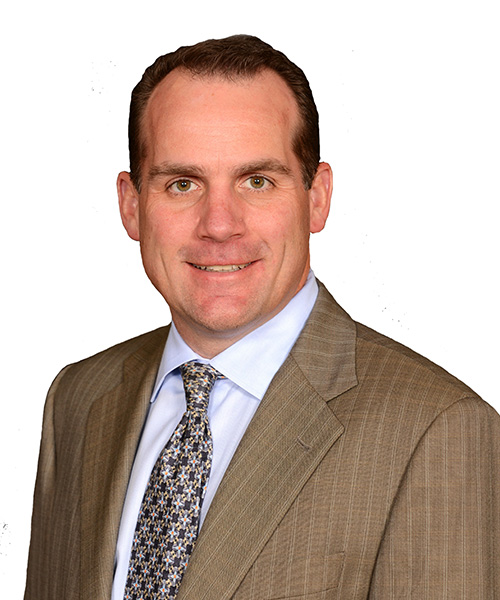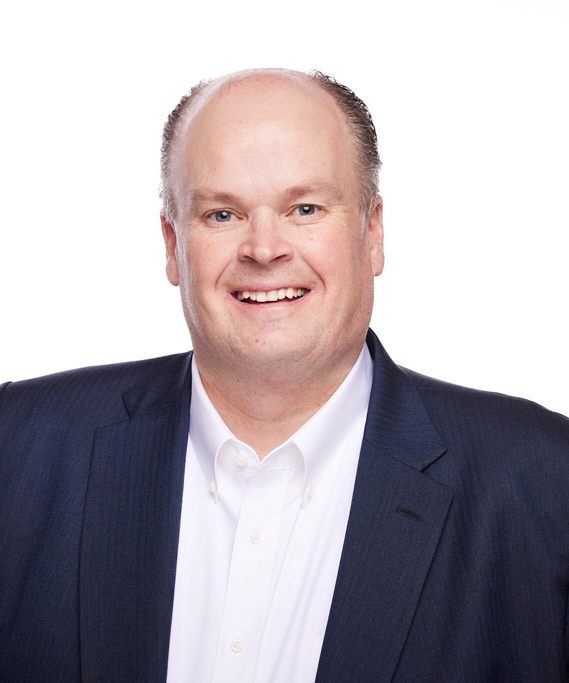Leadership
- Home
- >
- Leadership
Executive Officers
Our Executive Team knows first-hand what it takes to provide superior healthcare services and facilities for the senior community. We understand that this laser focus on best-in-class care is essential for an operator to achieve healthy growth.

Dave Sedgwick
President & Chief Executive Officer

Bill
Wagner
Chief Financial
Officer

James Callister
Chief Investment Officer
Board of Directors
CareTrust’s Board of Directors each brings deep expertise in healthcare, real estate, investing, accounting, and business development.
Dave Sedgwick
President & Chief Executive Officer
Diana Laing
Board Chair
Spencer Plumb
President and Chief Executive Officer of Sabin Holdings, LLC
Careina Williams
Principal at Sundance Bay
Anne Olson
Chief Operating Officer and Secretary of Centerspace
Our Story
As former healthcare facility operators, our deep industry roots, experience and relationships distinguish us in our ability to navigate the intricacies, challenges, and opportunities for investment. The lessons we’ve learned from the inside shape our operator-centric approach because we understand more intimately what operators really need in order to provide best-in-class care, and how to set them up for long-term success.
Bio: Dave Sedgwick
President & Chief Executive Officer
Dave Sedgwick is the President & Chief Executive Officer at CareTrust REIT and has been with the company since its inception in 2014. During his time at CareTrust, Mr. Sedgwick has both led and been instrumental in the Company’s performance across core areas of the Company’s day-to-day operations and strategy including new investments, asset management, tenant relations and portfolio management, investor relations, and capital markets activity.
Prior to joining CareTrust, Mr. Sedgwick served in several key leadership roles at The Ensign Group from 2001 to 2014. During 2013, he operated Ensign’s then newly-built Medicare-only skilled nursing facility in Denver, Colorado and simultaneously supported Ensign’s skilled nursing operations in Colorado. During 2012, he served as President of Ensign’s Maryland-based urgent care franchise venture, Doctors Express. From 2007 to 2012, Mr. Sedgwick served as Ensign’s President of Facility Services & Chief Human Capital Officer, including responsibilities for overall facility support services, new acquisition integration, and Ensign University, which included Ensign’s facility CEO recruiting and training program. From 2002 to 2007, he operated three Ensign skilled nursing facilities in two states. Mr. Sedgwick has been a licensed nursing home administrator since 2001 and holds an MBA from the University of Southern California and a BS from Brigham Young University.
Bio: Bill
Wagner
Chief Financial
Officer
Mr. Wagner has been CareTrust REIT’s Chief Financial Officer and principal accounting officer since our inception in 2014.
Prior to that, Mr. Wagner served as Chief Financial Officer of First Team Real Estate, a private real estate brokerage company. He also held the role of Senior Vice President and Chief Accounting Officer of Nationwide Health Properties, Inc., a healthcare REIT. For 4 years, Mr. Wagner was Senior Vice President and Chief Accounting Officer of Sunstone Hotel Investors, Inc., a lodging REIT. And before that, Mr. Wagner was Vice President of Financial Reporting for The TriZetto Group, Inc.
Mr. Wagner has also worked for two Internet startup ventures. He served as Director of Financial Reporting for Irvine Apartment Communities, Inc., a multifamily REIT. And he started his career working for EY Kenneth Leventhal Real Estate Group serving real estate clients including several REITs.
Mr. Wagner received a BA degree in Business Administration from the University of Washington, and is a Certified Public Accountant (inactive) in the State of California.
Bio: James Callister
Chief Investment Officer
James Callister is the Chief Investment Officer at CareTrust REIT and has been with the company since 2021 when he joined as CareTrust’s General Counsel. Mr. Callister’s primary focus is working with the company’s acquisitions team in structuring and negotiating new equity and debt investments. He has also been an integral part of the Company’s legal and corporate functions, asset and portfolio management matters, and tenant relationships.
Prior to joining CareTrust, Mr. Callister worked as a real estate attorney and a partner at the law firm of Sherry Meyerhoff Hanson & Crance LLP and, before that, at the law firm of O’Melveny & Myers LLP. Since 2008, he has worked almost exclusively on healthcare REIT transactions, closing on acquisitions or financings of over 300 skilled nursing, seniors housing, and independent living facilities on transactions involving the investment of over $2.5B across 35 states. Mr. Callister has assisted in the structuring, negotiating and closing of all of CareTrust’s acquisitions since its formation as a REIT. As an attorney, Mr. Callister worked for nearly 20 years in private practice representing and advising clients in a diverse array of real estate transactions. Mr. Callister’s transactions-based legal experience has focused on the representation of publicly-traded REITs in the acquisition, disposition, leasing, and financing of healthcare-related properties. Mr. Callister holds a B.A. History from Brigham Young University and a J.D. from the J. Reuben Clark Law School at Brigham Young University, where he graduated magna cum laude.
Bio: Dave Sedgwick
President & Chief Executive Officer
Dave Sedgwick is the President & Chief Executive Officer at CareTrust REIT and has been with the company since its inception in 2014. During his time at CareTrust, Mr. Sedgwick has both led and been instrumental in the Company’s performance across core areas of the Company’s day-to-day operations and strategy including new investments, asset management, tenant relations and portfolio management, investor relations, and capital markets activity.
Prior to joining CareTrust, Mr. Sedgwick served in several key leadership roles at The Ensign Group from 2001 to 2014. During 2013, he operated Ensign’s then newly-built Medicare-only skilled nursing facility in Denver, Colorado and simultaneously supported Ensign’s skilled nursing operations in Colorado. During 2012, he served as President of Ensign’s Maryland-based urgent care franchise venture, Doctors Express. From 2007 to 2012, Mr. Sedgwick served as Ensign’s President of Facility Services & Chief Human Capital Officer, including responsibilities for overall facility support services, new acquisition integration, and Ensign University, which included Ensign’s facility CEO recruiting and training program. From 2002 to 2007, he operated three Ensign skilled nursing facilities in two states. Mr. Sedgwick holds a B.S. in Accounting from Brigham Young University and an M.B.A. from the University of Southern California.
Mr. Sedgwick has been a licensed nursing home administrator since 2001 and holds an MBA from the University of Southern California and a BS from Brigham Young University.
Bio: Diana Laing
Board Chair
Diana Laing was most recently the Chief Financial Officer of American Homes 4 Rent, until her retirement in June 2018. Ms. Laing held this position for four years, with responsibilities including capital markets, investor relations, accounting and financial reporting, and information technology. Prior to her position at AMH, Ms. Laing was the Chief Financial Officer and Corporate Secretary for Thomas Properties Group from 2004 to 2013, and Principal and Chief Financial Officer at New Pacific Realty from 2001 to 2003. She also held the role of Chief Financial Officer at Arden Realty from 1996 to 2000 and at Southwest Property Trust from 1986 to 1996, having held the role of Controller and Treasurer prior to that. Ms. Laing started her career as an auditor at Arthur Andersen & Company in Dallas, TX and earned a bachelor’s degree in accounting from Oklahoma State University. She currently also serves as an independent director on the board of directors of Alexander & Baldwin, Inc. (NYSE:ALEX), The Macerich Company (NYSE:MAC) and Spirit Realty Capital, Inc. (NYSE:SRC).
Bio: Spencer Plumb
President and Chief Executive Officer of Sabin Holdings, LLC
Mr. Plumb serves as President and Chief Executive Officer of Sabin Holdings, LLC, a global real estate platform launched in 2016. Prior to Sabin Holdings, LLC, Mr. Plumb co-founded Excel Trust, Inc. (formerly NYSE:EXL) in 2009 and served as its President and Chief Operating Officer and as a member of its Board of Directors. Excel Trust, Inc. was acquired and taken private by Blackstone Property Partners in July 2015. In addition, Mr. Plumb has held various positions over his career with other public and private companies, including Excel Realty Holdings, Price Legacy Corporation, Excel Legacy Corporation, New Plan Excel Realty Trust, Excel Realty Trust, and Excel Interfinancial Corporation. Mr. Plumb also serves on the investment committee of The Sabin Children’s Foundation, whose mission is to relieve the distress of children around the world. Mr. Plumb received a Bachelor of Arts in Economics from Brigham Young University. Mr. Plumb’s leadership experience, his executive leadership experience in a REIT, and general real estate and REIT background qualify him to serve on our Board of Directors.
Bio: Careina Williams
Principal at Sundance Bay
Careina D. Williams has served as a member of our Board of Directors since 2022. Ms. Williams has served as a Principal at Sundance Bay, a real estate private equity firm that specializes in multifamily investing, net lease investing and real estate debt lending nationwide, since May 2020. Ms. Williams served as a member of Sundance Bay’s Advisory Board from 2018 to 2020 prior to joining the firm as a Principal. In addition, from 2017 to 2018, Ms. Williams served as Chief Operating Officer of Zero G Capital Management LLC, an equity hedge fund, and from 2012 to 2017, Ms. Williams served as Principal, Acquisitions and Asset Management at Artemis Real Estate Partners, a real estate investment manager with a focus on multifamily, industrial, office, retail, hospitality, senior housing and medical office. Prior to her role at Artemis Real Estate Partners, from 2003 to 2012, Ms. Williams served as a Principal, Investments at Capri Capital Partners, LLC. Ms. Williams serves as a Trustee and Vice-Chair of the Investments & Endowment Committee of the United Church of Christ, and previously served as a Trustee and Chair of the Finance & Endowment Committee for Peoples Congregational Church of the United Church of Christ. Ms. Williams is also a member of the Urban Land Institute Commercial & Retail Development Council (Silver). Ms. Williams received an A.B. in Economics from Harvard University and an M.B.A. from Harvard Business School. Ms. Williams’ expertise in credit analysis, her network of relationships within the real estate industry, her experience in underwriting, financing, acquiring and managing real estate across a broad array of sub-classes, and her experience with environmental and sustainability issues in real estate qualify her to serve on our Board of Directors.
Bio: Anne Olson
Chief Operating Officer and Secretary of Centerspace
Anne Olson currently serves as Chief Operating Officer and Secretary of Centerspace (NYSE:CSR), a multifamily-focused real estate investment trust, since 2018, and served as Centerspace’s Executive Vice President, General Counsel and Secretary from 2017 to 2018. From 2011 to 2017, Ms. Olson was in the private practice of law, most recently as a partner with the law firm of Dorsey & Whitney LLP in its Real Estate Practice Group, and previously with Lindquist & Vennum LLP, where her practice focused on real estate development and investments for REITs, private equity funds, and national developers and owners. From 2006 to 2011 she served as Director of Investment Operations and in-house counsel for Welsh Companies, LLC and its affiliates. Prior to 2009, Ms. Olson served as Vice President and Corporate Counsel for U.S. Bank, N.A., and as an associate attorney at Larkin, Hoffman, Daly & Lindgren LLC and Dorsey & Whitney LLP. Ms. Olson is an active member of the Urban Land Institute and the National Multifamily Housing Council and is a member of its Innovation Committee. She holds a B.A. in English from Drake University, and a J.D. from Drake University Law School. Ms. Olson’s executive leadership experience in a growing public REIT, expertise in complex real estate transactions, legal experience working in and advising public and other companies, and general real estate knowledge and experience qualify her to serve on our Board of Directors.